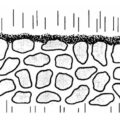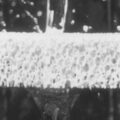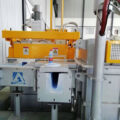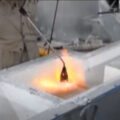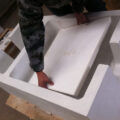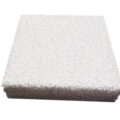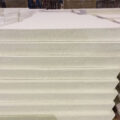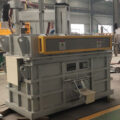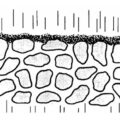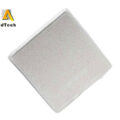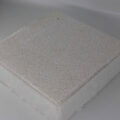Filtration Treatment can reduce aluminum melt casting defects, make the liquid metal purer, and greatly reduce the occurrence of waste problems such as blistering and holes. The molten metal foam filter has excellent thermal shock resistance, chemical resistance, and high-temperature stability.
The alumina ceramic foam filter in aluminum factory is made of non-stick aluminum material, which has the characteristics of non-stick aluminum. The product is white or milky white.
CFF Filtration Treatment is suitable for the purification process of aluminum and aluminum alloys with high requirements through physical adsorption and chemical action. It can effectively remove various oxide inclusions produced during the aluminum smelting process, thereby reducing casting defects, improving casting quality, and providing high-quality aluminum.
Filters in aluminum plants should be preheated before use. The filter plate is completely sealed in the aluminum water casthouse to ensure that all the aluminum water passes through the CFF casthouse, and the total filtering capacity does not exceed the specified limit. If the slag content in the aluminum water is too high, it should be filtered or reduced several times. The amount has been adjusted.
Advantages of Molten Metal Ceramic Foam Filter
1.3d grid structure
2. High mechanical strength, no residue in beating
3. High porosity
4. Large specific surface area, strong adsorption of impurities
5. Excellent thermal shock resistance
Ceramic foam filter molten metal filtration treatment is the best way to eliminate non-metallic inclusions in aluminum solution. These inclusions are the main source of casting quality problems.
When casting products, remove impurities in molten metal, refractory waste, solid refractory alloys, and sintered ore, eliminate turbulence, reduce the porosity of castings, and improve casting quality. Therefore, our alumina ceramic foam filters are widely used in the aluminum casting industry to prevent defects such as oxides, scum, gas, slag, and other impurities.
The turbulence in the metal flow is eliminated, the metal flow is stabilized, and spray, splash, and collapse are avoided. Improve fluidity, castability, processability, yield, and cost-effectiveness. Remove a larger proportion of fine particles, reduce waste, rework, and low-pressure loss. Provide consistent flow and capacity.

